|
The following is the introduction to a letter to the editor I submitted. Since The Ledger (Lakeland, FL) published it, I will not re-publish the entire article. Please click the link to visit The Ledger's website and read the article! The Ledger has been, and continues to be, very supportive of outreach-themed "Letters to the Editor" and I highly encourage you to consider writing one. The opinion section of the paper in this day and age tends to be filled with complaints and anger. Why not inject some inspirational messaging into that section? See my article, below, and if you are inspired to write a Letter to the Editor, let me know in the comments! Please Join the National Campaign to Combat Invasive Species in U.S. Published: Tuesday, March 3, 2015 at 12:01 a.m. National Invasive Species Awareness Week was developed to help slow the spread of invasive species across our landscape. Non-native plants, animals and pathogens can harm humans and the environment and impact our nation's economy. The damage done by invasive plants alone costs the U.S. an estimated $34.7 billion a year. Through NISAW, we hope to elevate the level of awareness regarding invasive exotic species and their impacts. To read the rest of my article, which includes easy ways for every resident to get involved in #NISAW, click here. Carnevale, S. “Please Join the National Campaign to Combat Invasive Species in U.S.” The Lakeland Ledger 3 March. 2015: A4. Print.
Did you know it is National Invasive Species Awareness Week? Better yet, do you know what an Invasive Species is and why they are a problem? If not, don't worry. It's a fairly easy concept. There are three major categories applied to plants:
You may be asking yourself, "A pest? How can a plant be such a bad thing? Aren't they just growing where our native haven't been successful?" The answer is, yea - sort of. Invasive exotics may not seem like a big deal; a plant is a plant after all. Who cares if it is this plant or that plant? You should! 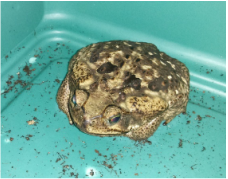 Cane Toad Cane Toad Oh, and did I mention the title of Invasive Exotic isn't limited to plants? Wildlife can earn this prestigious honor as well (please note the sarcasm...). An influx of invasive exotic species can lead to huge economic implications when flood control is impaired, parks become overrun with a vine shading out and killing all of the trees, or when wildlife populations are damaged due to predation. 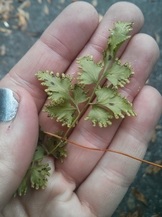 Old world climbing fern Old world climbing fern According to a Florida Department of Environmental Protection study in 2001, the value of nature-based tourism was $7.8 billion dollars and the largest threat to that industry is exotic invasive species. In addition to the state's economy, which I imagine we would all like to improve, invasive species can wreck havoc in your yard, too. Invasive species can throw entire ecosystems and regional plant communities out of whack. National Invasive Species Awareness Week is meant to spread the word regarding this fascinating and complex issue regarding exotic plants and animals. There's a rulle of tens associated with exotic species. It says, 10% of all introduced species will be able to reproduce and survive, and of those, 10% will become invasive. This is a huge problem for Florida! With four major airports and at least three major seaports; we see hundreds, if not thousands, of new species every month. Those species will have an easy time avoiding detection for many years if we use history as an example. We need to improve public awareness of the issue. For instance, I'd venture to say that most of the population in Florida is familiar with the exotic species Burmese python, and those in north Florida with Kudzu vine but how many are familiar with ... I would wager very few are familiar with these species which have been causing issue for decades in some cases! Want to know how YOU can get involved? I've borrowed some of these ideas from the Official NISAW website to share with you, check the website for more! Below, see five easy ways to get involved with #NISAW!
Thanks for reading about National Invasive Species Awareness Week! Did you learn something? Let me know in the comments below. Have a great #NISAW!
Below is an excerpt from a Letter to the Editor I wrote, published in The Lakeland Ledger at the end of January. Because it is posted in its entirety on The Ledger's website, I won't report the entire letter here. If you're interested, please click on the title to be taken to the Ledger's publication of this Letter. A Solution to Air Potatoes
Published: Friday, January 30, 2015 at 12:01 a.m. For those of you not familiar, air potato (Dioscorea bulbifera) is an exotic invasive vine with large, heart-shaped, shiny leaves. It quickly grows into and over trees, shrubs, fences and anything left in your backyard too long...To reduce the population of air potato in your yard or neighborhood park, collect the potatoes and throw them away. They should not be put in compost piles or vegetation piles to be mulched or left in the garage. They are aggressive growers and will sprout and grow even in a dark room without water or soil. Trust me on that one. To read the rest of the article, which includes information on residential air potato control, please click here. If you are an educator looking for a new way to enhance your outreach efforts, consider submitting a Letter to the Editor to your local paper. The opinion section, often filled with anger, could use some uplifting information to engage the community! Letters to the Editor may be a great avenue for Extension faculty to engage a new audience in their program areas. If this post has inspired you to write a letter to the editor, about natural resources or otherwise, let me know in the comments. I would love to read your letter! Carnevale, S. “A Solution to Air Potatoes” The Lakeland Ledger 30 Jan. 2015: A12. Print. 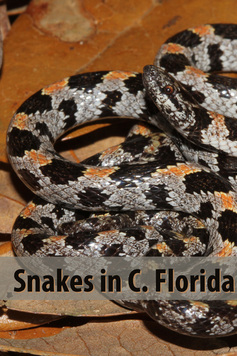 Like what you see? Consider pinning the above image to share with others. Like what you see? Consider pinning the above image to share with others. This month, I've been teaching a community workshop on "Snakes in Polk County." To my great surprise, my class has sold out or resulted in a full classroom at both locations! Why am I surprised? I didn't think so many people were interested in snakes. Clearly, I was wrong. For that reason, I thought it might be helpful to post some of the information I discussed at my class here. Snakes are a fascinating group of critters but tend to evoke all levels of fear and trepidation in the average resident or tourist. Let me assure you... you scare them as well! Below, I've listed some of the information we cover in the class. Snake Facts: |
| For more information on dealing with snakes in residential areas, check out the document series from University of Florida IFAS Extension. Or, check out Florida Fish and Wildlife's website at: http://myfwc.com/conservation/you-conserve/wildlife/snakes/ |
If you're interested in some books for further study, the ones I use in my office are:
| | |
Like what you see? In the interest of full disclosure, I may earn a small commission when you purchase items through the links provided here. There is no increase in cost, to you or anyone else, associated with these links.
Both snake photos on this page were used under thecreative commons license 2.0 in an unaltered form. Clicking on either photo will take you to the source's Flickr page.
Both snake photos on this page were used under thecreative commons license 2.0 in an unaltered form. Clicking on either photo will take you to the source's Flickr page.
The
Pathless
Woods
I'm Shannon.
Let's go somewhere.
Categories
All
Breweries
Camping
Camping Cuisine
Conferences
Crafting
Extension
First Time Homeowner
Flowers
Food
Gardening
Hiking
Hurricane Season
Invasive Species
Office Supplies
One Word
Outdoor Gear
Outreach
Professional Development
Travel
Wildlife
Words To The Wise
Archives
January 2023
December 2016
July 2016
March 2016
September 2015
August 2015
April 2015
March 2015
February 2015
January 2015
November 2014
October 2014
September 2014
August 2014
July 2014
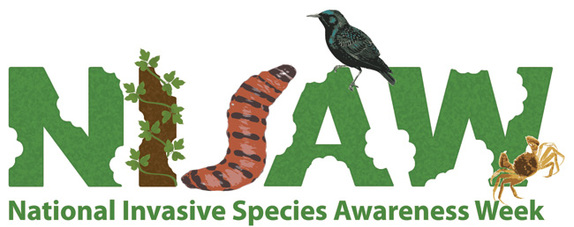

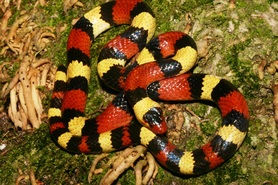

 RSS Feed
RSS Feed
